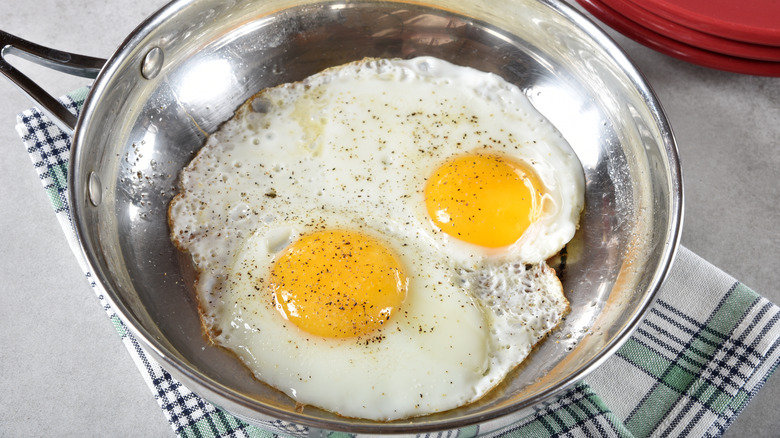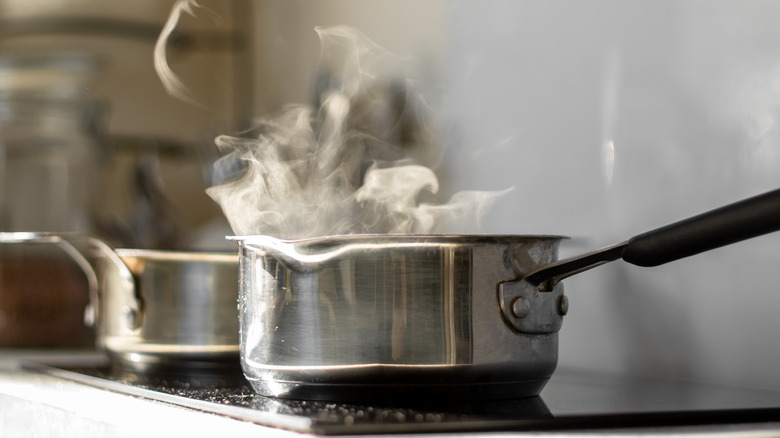The Scientific Reason Your Stainless Steel Pans Are Sometimes Non-Stick
If you've ever tried making eggs in a stainless steel pan, you're well aware of how less-than-easy it is to flip them. That over-easy egg goes to a stuck-on scramble, ASAP.
The first line of defense is to add a layer of fat to a hot pan, and this works pretty well. However, it's not always foolproof. One of the best friends of stainless steel is precise temperature. When you heat a stainless steel pan to the right temperature, it will deliver the perfect sear, caramelization, and slippery surface every chef dreams of. However, getting to that perfect temperature is a bit like Goldilocks and her porridge. It takes some skill, but it is a trick worth mastering. Understanding the science behind it is a good start.
If you've ever tried, or read about, the chef's trick to test if a pan is hot enough by adding a drop of water, you've experienced this scientific reason that makes stainless steel pans non-stick firsthand. But what exactly is it, and how does it work?
What is the Leidenfrost Effect?
The Leidenfrost Effect is when a surface is much hotter than the boiling point of a liquid, the liquid will vaporize, which results in a layer of steam. This steam keeps the surface and the liquid physically separate. Named after Johann Gottlob Leidenfrost, who first reported the phenomenon near the turn of the 19th century, there's an easy way to experience this wonder in action.
If you place a pan on the stove and put the heat to low and add a drop of water, the water will spread as normal. Allow the pan to heat up slightly and add another drop, and the water will sizzle. If you give the pan time to reach the Leidenfrost point, or twice the boiling point of water, the droplets will bead and bounce around. That's because the layer of vapor is keeping them lifted from the surface of the pan.
How does this effect make your stainless steel pan non-stick? The same thing that happens to the water droplets happens to the moisture in your food, allowing whatever it is you're cooking to easily slide around on the vaporized layer. To successfully use this effect, always preheat your pan before adding oil. And keep in mind that in order to remain non-stick, the pan needs to maintain that Leidenfrost point temperature. That means you should allow what you're cooking to come to room temperature first instead of adding frozen or extra-chilled food straight into the pan, which will drastically — and suddenly — drop the temp.

